-
Genealogy & Names
-
Tourist Information
-
Culture & Reference
VALENTINES GIFTS FROM IRELAND - VISIT IrishNation.com Only 37 Days To Go! |
|
November 2019 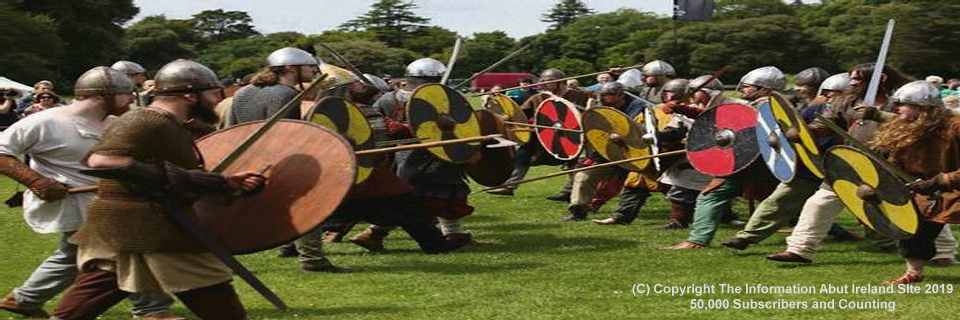
Viking Battle scene image from Free Photos Of Ireland |

|
|

| Popular Articles from Recent Newsletters: |


|
The announcement by the Bishop of Ossory, Dermot Farrell, that Sunday Masses in the Ossory diocese will be decreased in number from 140 to 92 may only be the tip of the iceberg for mass-goers in Ireland. The 34% decline in Masses in this single diocese is likely to be replicated country-wide as the Catholic Church struggles to attract younger people to the priesthood. 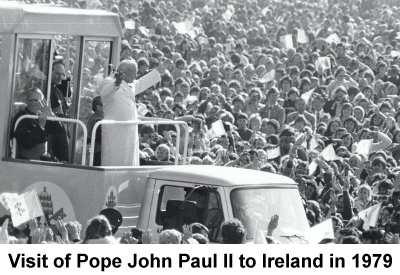
Fr. Roy Donovan of the Association of Catholic Priests (ACP): 'There is a massive amount of churches, but some communities have no priests, which is going to happen more and more, and that's going to lead to churches closing, and that's very sad.... As long as they hold onto a male, celibate priesthood, it's not going to encourage younger people to become involved.... You need younger leaders in the Church.' Pope John Paul II visited Ireland in 1979 when 90% of the population identified in the Census as Catholic and mass attendance was 87%. By the time of the 2016 Census 78% identified as Catholic while mass attendance dropping dramatically to 35%, and to as low as 20% in the Dublin Archdiocese with some Dublin Parishes reporting a 2% attendance. Bishop Dermot Farrell has warned that the crisis shows no sign of abating, pointing out that the number of priests in the country under the age of 75 will halve over the next decade. |

|
The EU maintains a 'Macroeconomic Scoreboard' for each of its members states with the Irish performance showing a continued improvement. In fact there was only one way to go really since 2010 and 2011 when Ireland breached 10 out of 14 of the economic indicators. Those 2 years represent the very depths of the recent economic downturn. Since then individual markers such as Unemployment and Labour Costs have all improved as the hair-shirt years start to give way to a much healthier economic picture. 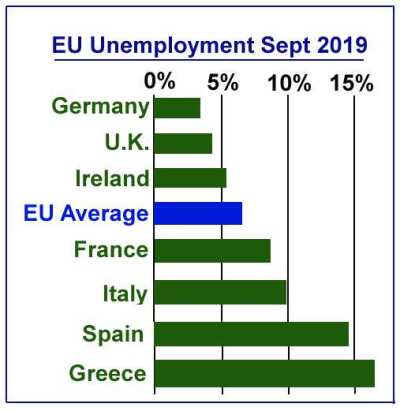
But other markers such as Government and Private Sector debt, House Prices and Foreign Investment as a proportion of GDP are less encouraging. Debt-wise Ireland is in very bad shape. The series of loans forced on the country by the EU/ECB/IMF in order to pay off the French and German bondholders in 2009 saddled the country with a 64 Billion Euro bill. The Government of the time, and the citizenry who voted them in, where happy to kick this down the road for their children to pay, so that EU-imposed debt will be hanging around Irish necks for decades to come. House prices are out of control in certain parts of the country which has precipitated a homelessness crisis and deteriorating conditions in the property rental market. Tales of ten or twelve people sharing individual rooms in already crowded houses are now commonplace. Unemployment, Youth Unemployment and Long-Term Unemployment have all plummeted in Ireland in recent years. The 3-year average for unemployment in Ireland is 7% with the actual rate standing at 5.3% in September 2019. By comparison unemployment in Greece, Spain and Italy were at 16.9% ad 14.2% and 9.9% respectively. Germany and the UK had unemployment rates of 3.1% and 3.8%. |

|
Bricriu (pronounced bree-croo) was known in Ulster as 'Bricriu of the Poison Tongue'. He was sarcastic and devilish, humorous, cunning and manipulative. 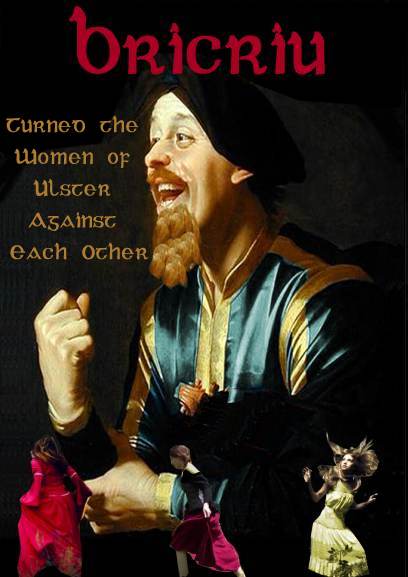
His main aim was to cause as much trouble as he could and he succeeded greatly! Despite the anger and wrath he aroused he was able to save his skin by the use of his quick wit and cunning nature. It was also a help that he was incredibly wealthy. So wealthy was Bricriu in fact that he was able to host lavish banquets and gatherings at his feast hall built just for that sole purpose. So magnificent was the great feast hall that even the royalty of Ireland were determined to promote their own status by attending, despite the risk of failing victim to the poisoned tongue!. The stage was ready then for the great feast of Bricriu with even the mighty Cuchulainn set to attend. But not all of the Irish leaders were so enthralled by the prospect of entering Bricriu's lair. Fergus MacRiogh warned the Ulster champions to avoid the gathering, fearing for calamity and doubting Bricriu's intentions. '....No! for if we go our dead will outnumber our living, when Bricriu has incensed us against each other!' Of course his warnings went unheeded. Cuchulainn entered the great hall with wife Emer, she of the six Womanly Gifts of music, physical beauty, the gift of song, embroidery, the gift of wisdom, and of modesty. Conal Cearnath attended with his wife 'Lendabair the Fair' whose golden hair was famous throughout the land. Laoghaire Buadach arrived with his wife 'Fedelm the Ever-blooming'. The attendance of these women became the focal point of Bricriu's plan for he intended to use the vanity of the women to divide the men, and to cause mayhem. Shortly after their arrival Bricriu found an opportunity to whisper into the ear of each of these graceful visions of womanhood, describing each as being the most beautiful and powerful of all of the women of Ulster, that each in turn had the most powerful husband and that each in turn should be no less than Queen of Ulster! He informed each of the three that the first woman to return from their walk in his garden and to enter the feasting hall would become Queen. Unaware that they had been set against each other the three beautiful women and their fifty attendant maids each made their way back to Bricriu's feasting hall after their walk in the garden. Gradually they approached, initially walking with a stately gentle purpose but their pace increased gradually as they observed each other, each wanting to be first through the door, Panic soon set in with the women even raising their dresses above their knees and making such haste and creating such noise that the women and their fifty attendants caused a stampede and commotion of such volume that the whole building shook to its foundation. The warriors within the house rushed out to find the cause of the mayhem and to their amazement found the masses of women, royalty and attendants alike, in an undignified pile at the entrance to the building, while Bricriu of the poisoned tongue laughed heartily at the trouble he had caused. Cuchulainn took charge, lifting the entire feasting hall above his head so that his wife Emer might enter first, claiming her rightful place as Queen of Ulster, while every other soul in attendance regretted that they had ever set foot in the lair of 'Bricriu of the Poison Tongue'. |


find out more |

|
It has been said that the first duty of a gentleman is to keep out of the hands of the police. Up to the time of writing I have carried out my gentlemanly duties, in that respect, every day of my life, with one exception. That was Tuesday 4th November 1969 when I was the victim of a wrongful arrest. 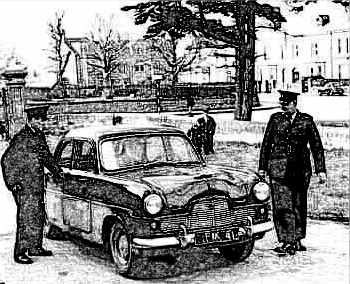
It was 11:15 A.M. and I was feeding our one and only bonham. A car bearing the roof-sign of our National Guardians of the Peace stopped at the gate of our humble abode at Kylebeg. It was driven by a 38 year old farmer's son, Paddy Browne, from Kenmare. He shared a surname with the one-time Earls of Kenmare but a Protestant farmer who had rented a house to him had once told me that there wasn't much evidence of any nobility connection. The observer was a 44-year-old son-of-the-soil from Kilmorgan, County Sligo. His Name was Bill Tighe. (Up to that moment I had little dealings with either officer apart from meeting them during Census-taking. I knew that they referred to me as 'the Poet' which was understandable since I was in the habit of linking even the most grim situation to a poetic allusion.) Despite their agricultural background they had no compunction about taking me away from my pig-feeding, when they asked me to accompany them to Blessington Station. If my neighbours hadn't known me as well as they did no doubt they would have been 'wondering if the man had done a great or little thing,' Didn't the poet say: 'To every Irishman on earth, Arrest comes soon or late.' While Browne reversed the Squad-car down our narrow lane Tighe revealed to me that I had stolen an unspecified quantity of ham on Friday 24th October. Although I was no Phrenologist, looking at his profile from the back seat I recalled a comment made by one of my neighbours. Whatever about the grammatical correctness of the observation I was now tempted to accede to its accuracy; he had once described Tighe as being; 'so thick that he would nearly need watering twice a day.' And, at that moment, I became a bit more tolerant of those who drew the cartoons of the Irish in the 19th century Punch magazine. Once in the station another Garda had something to say. This 31 year old was Willie Nash, from Gurtnacrehy, County Limerick. You may not have heard of Gurtnacrehy; the only time the word crops up is in the names of Greyhounds. Nash was so well turned out that he was like a male mannequin compared to his more bucolic colleagues. When he first came to Blessington in January 1962 he was a useful man on the football field and sported a crew-cut. Now he was opting for a (slightly belated) Beatle look. He imparted the additional information that I had maliciously burned a rick of hay, the property of Dan Cullen, on Saturday 27th September. I didn't share the view of the local farmer who, at the time, said, 'There was only one mistake; that he wasn't in it when they lit it.' Nash's body language (as he replaced a nail-file in his tunic pocket, having checked his reflection in the window), proclaimed his lack of self-esteem and the fact that he was well aware of my innocence. His rhetorical question: 'Would it surprise you to know that you were seen lighting it?' was slightly off the mark (not to mention off the wall). I knew, through my own sources, that a quantity of ham had been reported stolen in Ballinastockan. I wasn't told if it was a quarter or a half pound but I doubted the authenticity of the crime. As the interrogation progressed I became more convinced that the case of the purloined bacon should enter the annals along with The Easter Bunny, the Unicorn and a few pre-election promises. I knew that there wasn’t a great tradition of stealing foodstuffs in the Lacken/Ballinastockan area; the last recorded theft of that nature was pertaining to an incident, during the Civil War, on 15th September 1922. Edward Grace, a Merchant, from Ballymore Eustace had some loaves stolen from two of his vans in Ballyknockan and Lacken on that day. Despite being the victim of the dirtiest trick ever played on me, being spoken to like an imbecile, humiliated, embarrassed and treated like a criminal I refused to confess to two fictitious crimes. It's at times like this the words of Ethel Rosenberg spring to mind: 'I am innocent..... to forsake this truth is to pay too high a price.' The Sergeant, looking less than prepossessing and more than his thirty-seven years, gave the OK to have me locked in a cell. Maurice O ‘Sullivan, ex-Mental Nurse (known as a 'keeper at the time), from Slaheny, Co. Kerry, was very concise. Not living up to his family’s nickname of 'The Long Maurices' he drew himself up to his full five-foot nine and a half inches, pretended to read from a Manilla folder and told me: 'I have enough evidence here to charge you.' This frightened me. I knew that the crime of arson could carry a life sentence. I asked myself if I was, in fact, dealing with a lunatic. Bearing in mind that my father always made a distinction between a madman and what he called 'a bad-inclined madman.' Perhaps the sergeant’s past was the reason for the brevity: 'For he to whom a watcher's doom Is given as his task Must set a lock upon his lips Etc.' Did the experience in his previous life prompt him to believe that I was the sort, so much in awe of authority, who would confess to anything? Although it was fifteen years since he surrendered his badge in Saint Fenan’s Hospital, Killarney, the 'One Flew over The Cuckoo's Nest Syndrome' obtained. He still thought that he could do what he liked? ('...for in a madhouse there exists no law.'). I thought of William Blackstone who said 'It is better that ten guilty persons escape than one innocent suffer' I soon reminded myself that Mr. Blackstone didn't spend four years working in a Kerry asylum. When I was told 'You'll get out when you tell us the truth') I took on board my neighbour’s opinion of the speaker. And the farmer's boots and sly smile I saw as further evidence that Tighe was not a member of Mensa, would not appreciate Tennyson, and so I thought it would be futile to quote: 'This truth within thy mind rehearse, That in a boundless universe Is boundless better, boundless worse.' My father always said that I would 'hear the grass growing' and now I became acutely aware of my better–than-average auricular ability. Sound- proofing had not been a consideration in the design of the cell-door and I could hear every word spoken in the day-room. Industrial-relations matters within the Gardaí were touched on lightly before a turn in the conversation that was very interesting and informative; but that is a story for another day. Suffice, for now, to say that there was paraphrasing of the words of Thomas Jefferson; 'We have the wolf by the ears and we can neither hold him nor safely let him go. Justice is in one scale and self-preservation on the other.' I knocked on the cell door. It immediately opened and framed Nash, who I felt was of the opinion that I needed taking down a peg. I studied his face. Why? Because Jim Blake who worked for Paddy Crotty had told me, 'That Nash fella has square eyes.' He didn’t. While his optical hemispheres displayed the shiftiness of the insecure they were of regular shape. He insisted on pretending that I was a suspect and closed the door. When next I knocked on the cell-door it was opened by Tighe who told me (why I don’t know): 'The sergeant is gone out on another big job'. This was followed by, 'Yer father says he doesn’t know what to tink. Will I go out for yer father?' When I once again protested my innocence this, alternatively motivated guardian of the peace, who wouldn’t ever stand if he could sit, said, 'We know certain tings Matt'. He didn’t specify what the 'things' with the silent 'h' were. He closed the door, slowly.... like he did everything else. When again I knocked with a hope of being released Browne uncovered the spyhole. His eye, viewed through the small rectangle of light, didn’t look friendly. I was sitting on a wooden bench with some sort of a 'tic' on it. Hey!.... Didn’t I read on the Leinster Leader about a Ballinastockan man being fined ten pounds for pissing on a mattress in the cell of Blessington Garda station? (Of course it wasn’t worded so in the 'Leader'.) 'Are you going to tell us about this fire?' Guard Browne enquired. Now secure in the knowledge that they knew I wasn’t guilty of anything I didn’t protest my innocence. I simply asked: 'Are you going to let me out?' Browne didn’t reply. He opened the cell door and allowed me into the day room. As he lit a Goldflake butt with a paper spill from the open fire he again accused me of arson. As I looked at his well-worn shoes and archaic wristwatch I thought of his economy-consciousness which his former Sergeant, Frank Reynolds, had told me about. My comment about the coldness of the cell and my plea to be left in the Day-room fell on deaf, Kenmare, ears. As he dragged on the ignited butt I was sternly told to 'get back in.' Which I did. Next thing the cell door opened. Garda Willie Nash told me, 'We’re lettin’ ye out but we’ll be takin’ ye in agin.' He wasn’t a man of his word. I haven’t seen the inside of that cell since. |

|
||||

|
The Vikings originated in Norway and Denmark and began their legendary raids during the eight century. The history of the Vikings in Ireland stretches back to the that time and culminates with their defeat by Brian Boru at the Battle of Clontarf in the year 1014. The earliest recorded raid from Vikings out of Norway was in the year 795 at Rathlin Island off County Antrim. 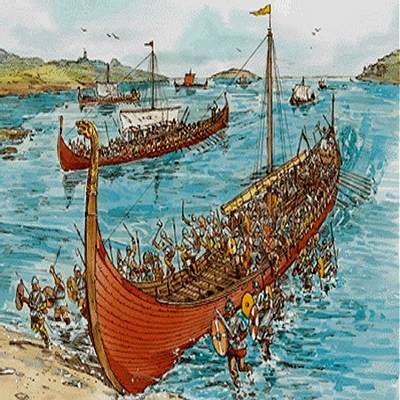 In the year 798 they raided the kingdom of Brega near the northern part of Dublin. These initial raids involved rapid landings, then plundering the local settlements and Monasteries before retreating back to the sea.
In the year 798 they raided the kingdom of Brega near the northern part of Dublin. These initial raids involved rapid landings, then plundering the local settlements and Monasteries before retreating back to the sea.
The Scottish isle of Iona was also attacked in the same year. By the year 802 the raids had stretched around the western coast as far as Skellig island and the ancient Monastery there. By the year 832 an intensification of the attacks occurred with fleets of Viking ships arriving at the Boyne, at Dublin and travelling the Shannon estuary. They took supplies, riches and slaves. Early Viking leaders who raided Ireland include Saxolb in the year 837, Turges in the year in 845, and Agonn in the year 847. By the end of the ninth century the Vikings began to establish settlements known as 'longports' along the Irish coast. These were essentially coastal forts that protected the Viking boats. The earliest of these were at Linn Dúachaill (Annagassan) in County Louth and Duiblinn on the River Liffey, the forerunner of what would become Dublin, the capital city of Ireland. The word Viking is taken from the Norse word 'Vikingr' which means 'sea-rover' or 'pirate'. Their longboats gave them an advantage that other sea-faring peoples just could not match. Their fierce attacks must have instilled terror into the local population and especially at the Monasteries where much of the wealth they craved was located. It is no coincidence that the number of high-towers built for protection in Ireland greatly increased during this era. By this time the Viking Chiefs Olaf and Ivar controlled the raids, some bringing as many as 1500 fighting men in many longboats - a veritable army. The Irish chieftains now began their defence in earnest since, as the Vikings had begun to make semi-permanent settlements they had become a much easier target. The Irish chieftain Máel Seachnaill is recorded as having routed the Vikings at Skreen in County Meath, putting over 700 of the invaders to death. Alliances between the Vikings and the Irish chieftains became commonplace as the presence of the norseman became a political inevitability to be acknowledged and dealt with. By the year 849 invaders from Denmark had begun to attack not only the Irish but also the more established Vikings of Norwegian origin. By 853 'Olaf the White' had assumed control of Dublin. He married the daughter of Áed Finnliath, king of the northern Uí Néill. Decades of warfare with some victories and some defeats for the Vikings followed. In the year 902 the Irish defeated the Vikings at Dublin. A second wave of attacks began in the year 914 with a large fleet of Vikings ravaging Munster. Over time the Irish fought back with some success. The Dublin Vikings were attacked by the King of Tara, the city sacked in the year 944. The stage was set for a great showdown between the two cultures with Brian Boru of Dál Cais in County Clare being the spear-point of the Irish attack. He had already defeated the Vikings in Munster. His great rival was Máel Sechnaill II, King of Tara. They reached an accord in the year 977 that Brian Boru would rule the southern part of the country with Máel Sechnaill II ruling the northern part. 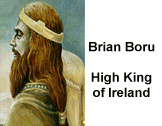 They even collaborated on a raid
against the Dublin Vikings in the year 998. By
the year 1000 Brian Boru had put down a revolt by
the Dublin Vikings, defeating Sitric and
eventually forcing Máel Sechnaill II to
acknowledge him as the High King of all of Ireland.
They even collaborated on a raid
against the Dublin Vikings in the year 998. By
the year 1000 Brian Boru had put down a revolt by
the Dublin Vikings, defeating Sitric and
eventually forcing Máel Sechnaill II to
acknowledge him as the High King of all of Ireland.
The Leinster Vikings again revolted in the year 1012 but were once again defeated. They knew that their time was limited so they sought help from Sigurd, Earl of the Orkneys, who arrived in the early part of 1014 to face the Irish. The famous battle of Clontarf ensued with the Irish squaring up to Sigurd, Brodar and Ospak who were Vikings of the Isle of Man. With Brian Boru, Brodar and Sigurd all killed in the fierce battle that followed the Vikings were eventually defeated, the battle entering the pantheon of myth and legend of Viking history. 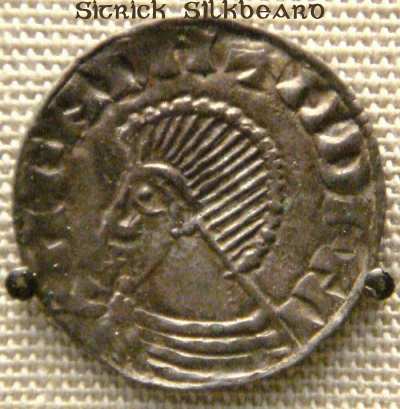 Estimates of the number of dead range from 6000
to over 12000, a huge number for warfare of
that time. The Viking defeat at the battle of
Clontarf effectively signalled the end of Viking
rule in Dublin and thus throughout the country.
Estimates of the number of dead range from 6000
to over 12000, a huge number for warfare of
that time. The Viking defeat at the battle of
Clontarf effectively signalled the end of Viking
rule in Dublin and thus throughout the country.
Long before this battle though the inevitable integration of the two cultures had begun. The invaders even assimilated the native Christian religion, forming alliances, marrying and eventually settling among the native Irish. The legacy of the Vikings in Ireland is extensive. The towns of Dubin, Cork, Wexford, Limerick and Waterford that were initially founded by the Vikings all developed into the major cities of the modern era. 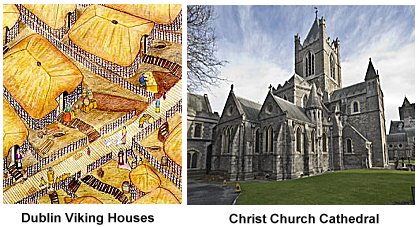 A full-scale invasion of the
island was never attempted as the Vikings had
matters in England and France to deal with.
Thus, despite the attacks, the native Irish
chieftains continued to prosper and make
treaties, war with each other and the Vikings,
sometimes allying with the 'norsemen' against
rival chieftains.
A full-scale invasion of the
island was never attempted as the Vikings had
matters in England and France to deal with.
Thus, despite the attacks, the native Irish
chieftains continued to prosper and make
treaties, war with each other and the Vikings,
sometimes allying with the 'norsemen' against
rival chieftains.
Coinage was first used in Ireland during the Viking era further providing evidence of the degree to which the Vikings changed from being raiders to merchants and settlers. Dublin was especially transformed by their presence, with Christ Church Cathedral being built by Sitric. The layout of the city centre today is much as it was originally designed by the Vikings. Further proof of their integration survives the centuries through the use of surnames. Families of McAuliffe (son of Olaf), McManus (son of Manus), Doyle (the dark stranger or foreigner), McLoughlin (son of Lochlainn) and McIvor (son of Ivor) are just a few of the many 'Irish' names that have deep roots within the Viking heritage. The death of Brian Boru marked a period of further fighting among the native Irish culminating with the Anglo-Norman invasion in the year 1169 and the beginning of a new period of warfare. It is a tragic fact of Irish history that the various chieftains and tribes remained so divided, unwilling to create a central leader or kingship capable of unifying opposition on the island to the centuries of foreign invasion and hostility that were to follow. |

View the Archive of Irish Phrases here: http://www.ireland-information.com/irishphrases.htm |

|
The winner was: mcauliffec@ymail.com who will receive the following: A Single Family Crest Print (usually US$24.99) Send us an email to claim your print, and well done! Remember that all subscribers to this newsletter are automatically entered into the competition every time. I hope that you have enjoyed this issue! 
by Michael Green, Editor, The Information about Ireland Site. http://www.ireland-information.com Contact us (C) Copyright - The Information about Ireland Site, 2019. 17 Páirc Ghrainbhil, Carraig Dubh, Contae Baile átha Cliath, Ireland Tel: 353 1 2893860 |

|
MARVELOUS GIFTS FOR ANY OCCASION FREE DELIVERY TO YOUR DOOR 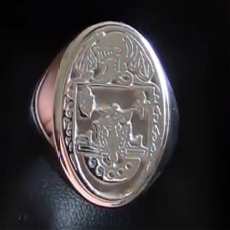
BIG REDUCTIONS! Stunning Family Crest Signet and Seal Rings 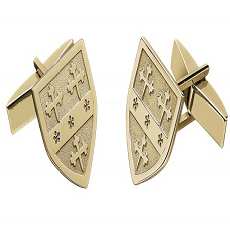
DISCOUNTED FOR A LIMITED TIME Elegant Cufflinks 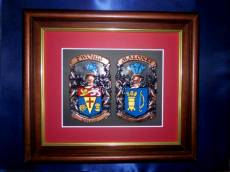
Incredible Family Crest Plaques Made in Ireland 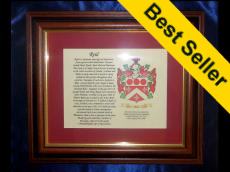
Superior Framed Family Crest Parchments 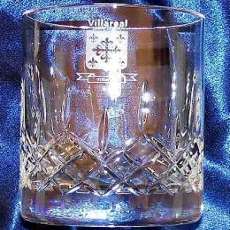
Gorgeous Glistening Galway Crystal 'Your-Name' Old Irish Sign NEW DESIGNS! 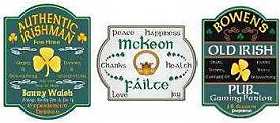
From US$34.99 - Free Delivery 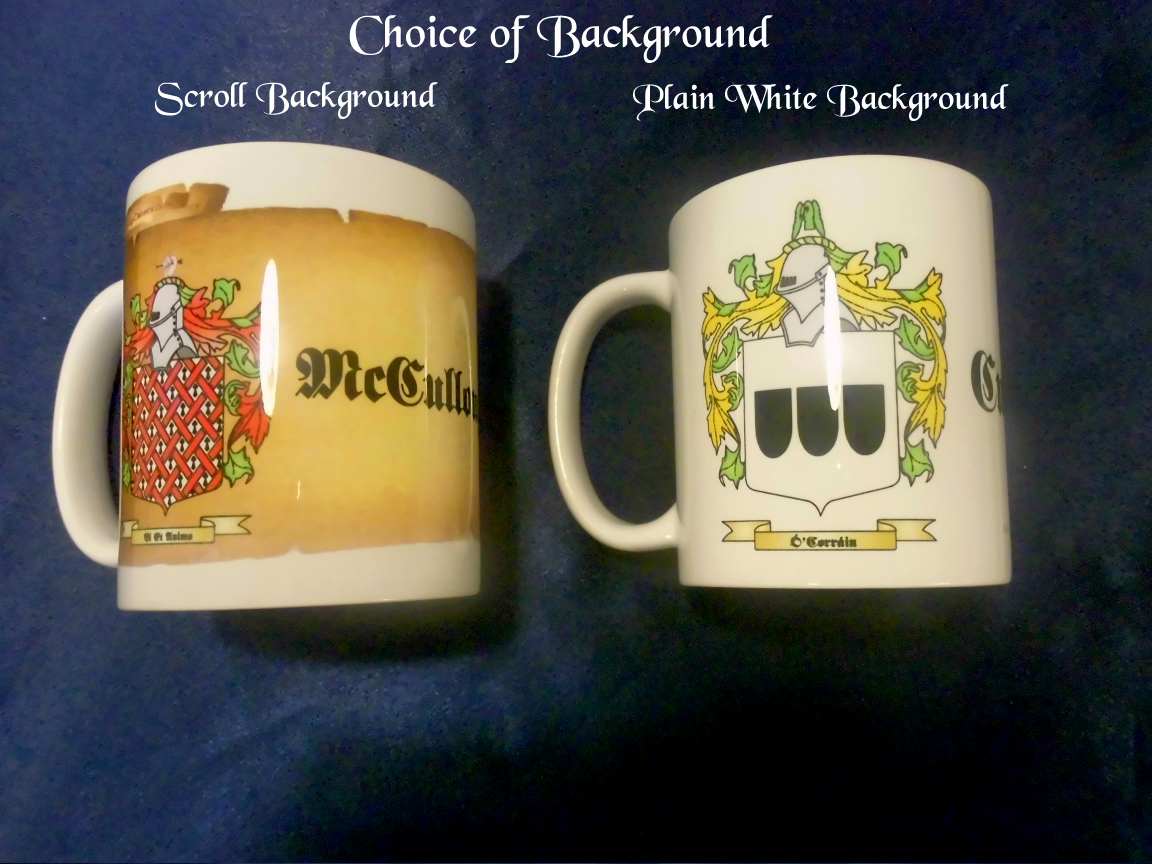
New Designs available on our Coffee Mugs 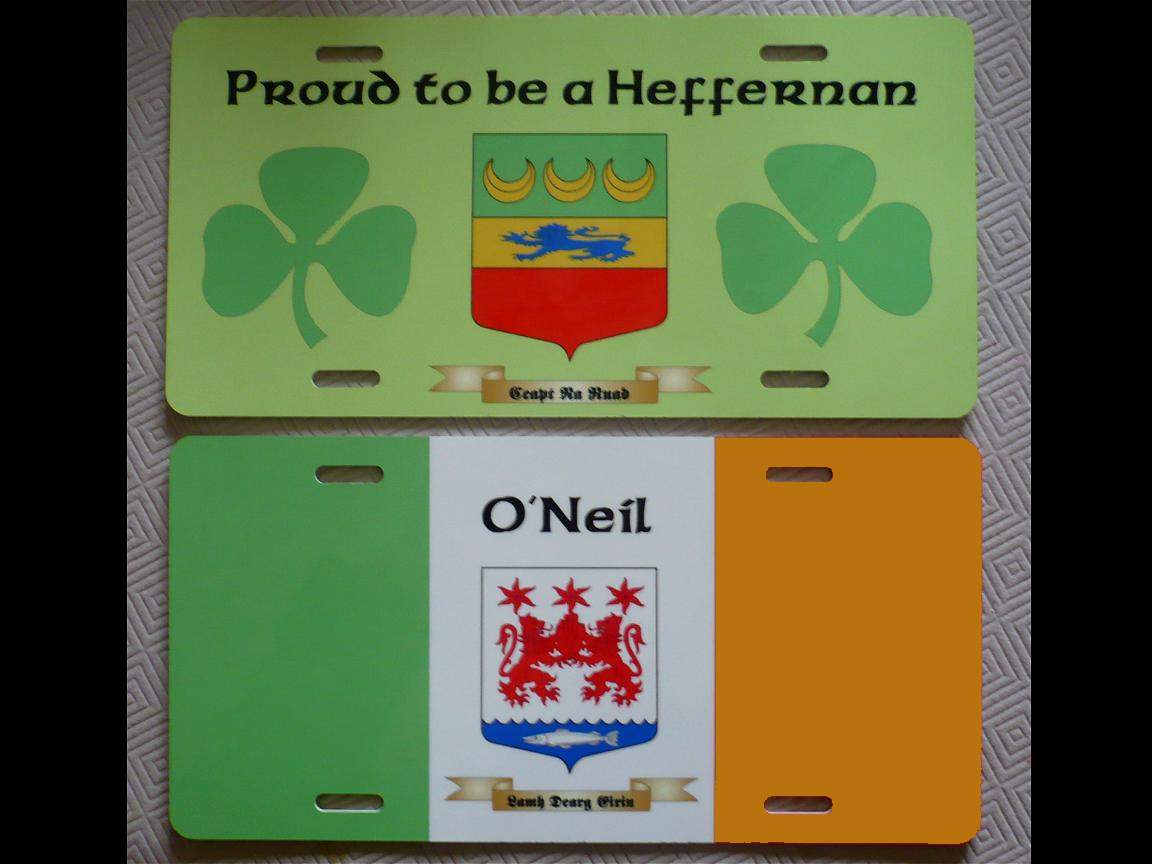
Personalized Licence Plate 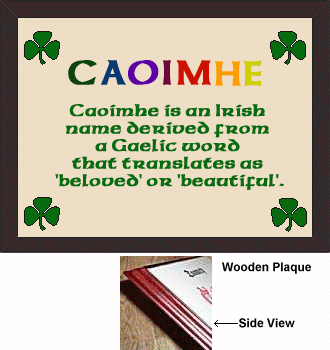
Personalized First Name Plaque. Great for Kids! 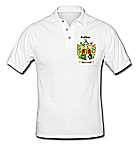
'Your-Name' Polo & Tee Shirts 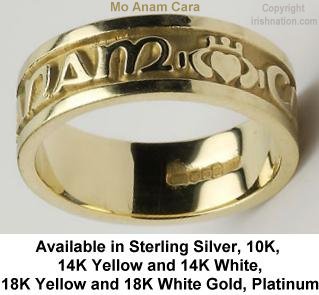
From US$69 Delivered BIG REDUCTIONS! Stunning Engraved Rings from Ireland with Irish Language Phrases. Mo Anam Cara: My Soul Mate Gra Dilseacht Cairdeas: Love, Loyalty, Friendship Gra Go Deo: Love Forever Gra Geal Mo Chroi: Bright Love of my Heart SEE MORE GREAT OFFERS AND DISCOUNTS AT: IRISHNATION.COM FREE DELIVERY FOR A LIMITED TIME! |
